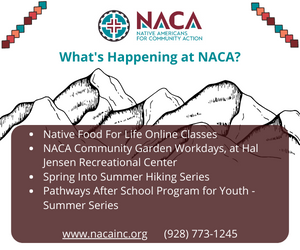 Flagstaff should give itself a pat on the back. A few years ago, the National Pollinator Garden Network (NPGN), a group of stakeholders in the gardening, pollinator and conservation communities, challenged Americans to create one million gardens rich in pollen and nectar-filled flowers to help out our pollinators like bees, birds and butterflies.
Flagstaff should give itself a pat on the back. A few years ago, the National Pollinator Garden Network (NPGN), a group of stakeholders in the gardening, pollinator and conservation communities, challenged Americans to create one million gardens rich in pollen and nectar-filled flowers to help out our pollinators like bees, birds and butterflies.
In three short years, the NPGN reached that goal. When they announced their success last year, the NPGN called attention to a handful of communities that they called “Pollinator Gardening Hot Spots,” where high percentages of the local population registered gardens. Among the places singled out for praise was Flagstaff.
While that recognition is great, we still need to do more. Here’s why.
Pollinators are responsible for one out of every three mouthfuls of food we have. Without them, we’d lose honey (obviously); fruit trees like apples, peaches, cherries, lemons and plums; berry plants and onions.
It’s not just fruits and vegetables, either. Crops like alfalfa and hay feed animals that in turn provide dairy and meat. According to a Forbes article published last month, pollinators are responsible for close to $20 billion worth of food-related products annually.
Even with a million additional gardens, pollinators are facing unprecedented challenges. The Monarch Butterfly population has declined 90% in the past few decades, mostly because of the loss of milkweed along their migratory route. Bee colonies have collapsed, victims of loss of habitat, pesticides and disease. The U.S. Fish & Wildlife Service says more than 20 species of pollinator birds are on the Endangered Species list.
So, let’s keep the momentum going and create more gardens. Or, make some changes in our current gardens so they are friendlier to birds, bees and butterflies.
The NPGN says its next big step is encouraging people to expand their garden habitats by planting at least three different pollinator-friendly plants that bloom in three different seasons (spring, summer and fall) to help ensure a consistent food supply.
Here in Northern Arizona in the late summer and early fall, your best pollinator attractors include: Rudbeckia, Gaillardia, Catmint, Coreopsis, Agastache, Monarda, Lavender, Penstemon, Yarrow, Echinacea, Summer Phlox, Trumpet Vine, Russian Sage and, of course, Butterfly bushes.
But there are other ways as well that you can help out the ecosystem and become a welcoming host to nature’s hardest working horticulturists. Adopting just a few strategic choices in your garden will help pollinators thrive:
Create habitats for pollinators by supplying necessary water, food, shelter and places to raise their young.
Plant in clumps as clustering plants makes them easier to find and shortens the need for travel, reserving the energy of backyard pollinators.
Plant a section of native plants and wildflowers to increase nectar and pollen sources for butterflies and bumblebees.
Choose a variety of colors and shapes, as different pollinators are attracted to different types of flowers. Flat petal flowers are a good landing pad for butterflies (they “taste” with their feet); funnel-like flowers attract hummingbirds; and both like bright colors. Meanwhile, bees can’t see the color red (blue and yellow work, however) and are attracted to sweetly aromatic blooms.
Build or purchase a “bee condo,” or leave dead trees or limbs for nesting habitats.
Use pollinator-safe pesticides and follow the directions for use carefully.
Warner’s locally grown native plant selection, as well as all the other quality plants from our nursery, provide multiple food sources for pollinators. Not only will they keep your local pollinators well fed, they’ll also keep your garden and yard looking lovely, too.
Happy gardening! FBN
By Misti Warner
Misti Warner-Andersen is the manager of Warner’s Nursery & Landscape Co., located at 1101 E. Butler Ave. in Flagstaff. To contact Warner’s Nursery, call 928-774-1983.







